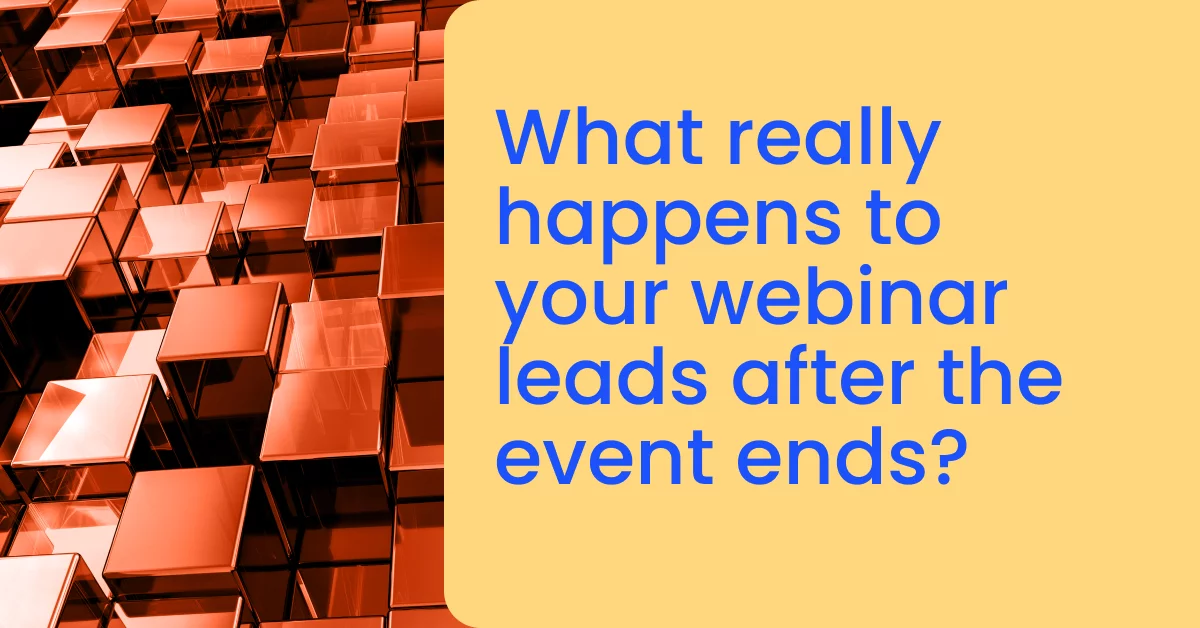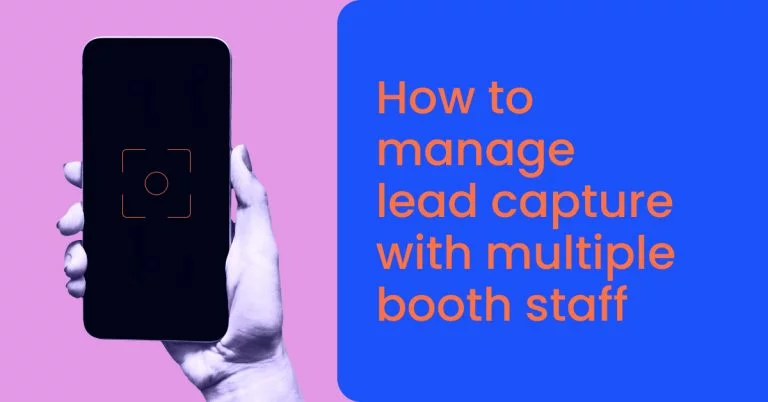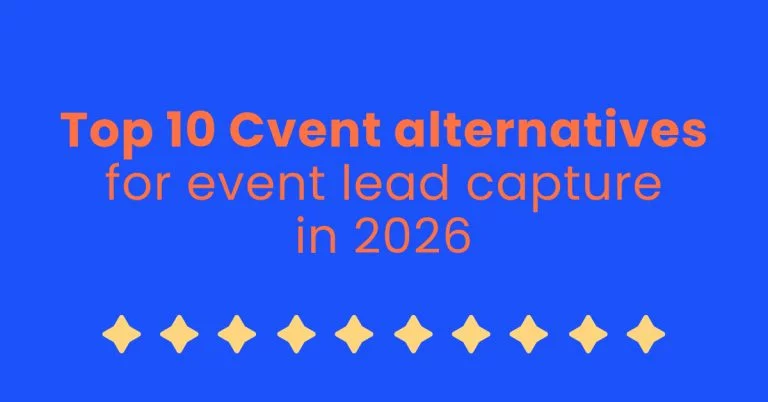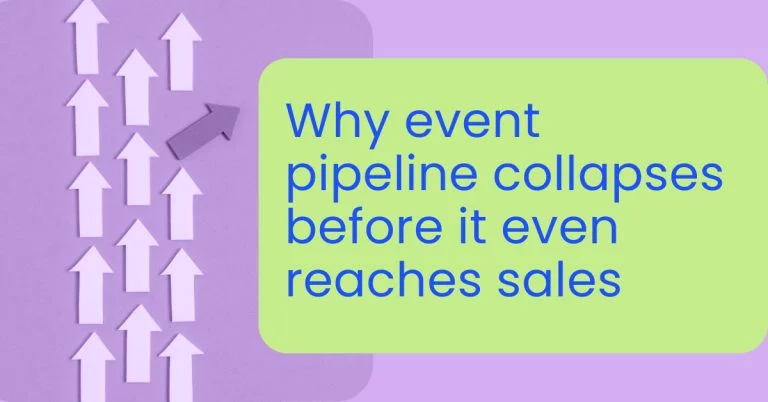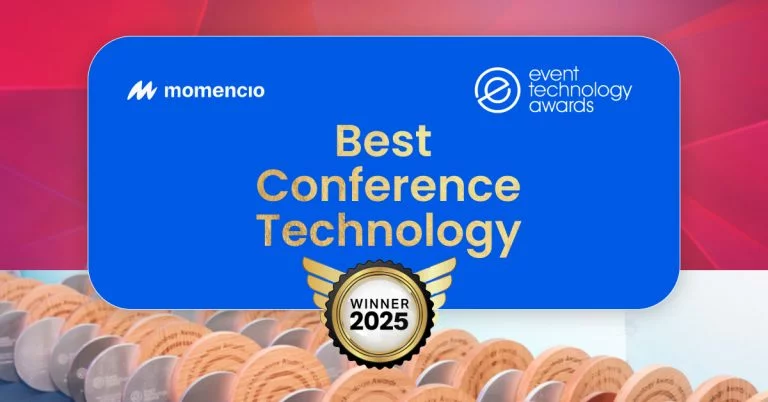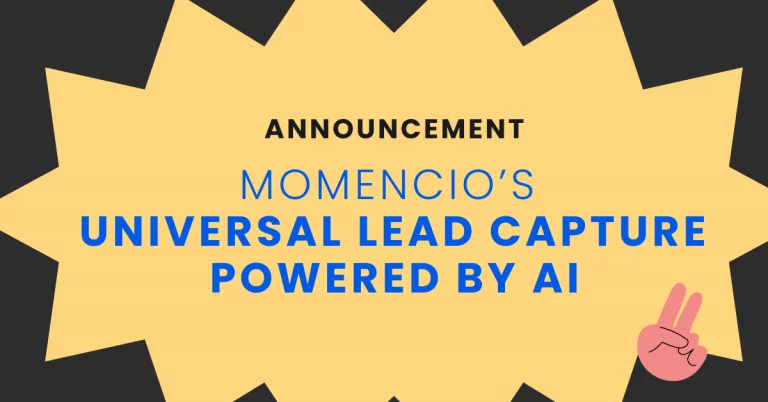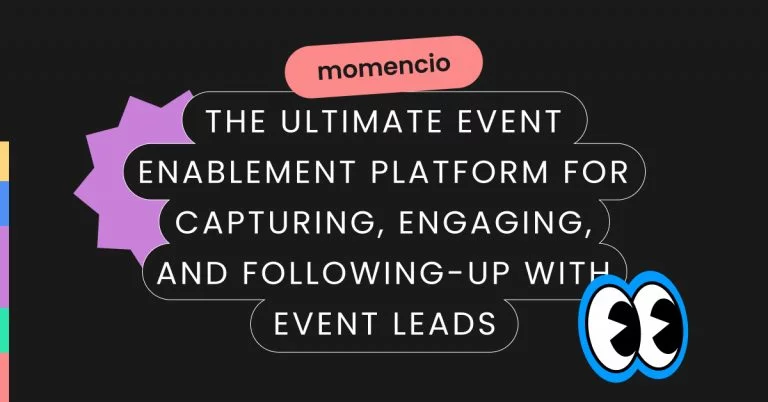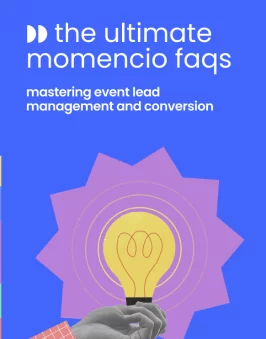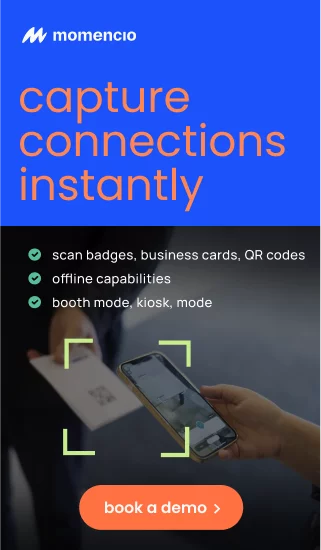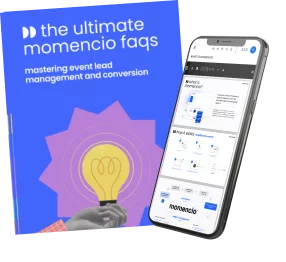Webinars look great on slides. Registrations go up, attendance looks fine, everyone claps. Then the livestream ends and the trail goes cold. In most stacks, you lose sight of who watched the replay, who clicked deeper, and who came back days later when they actually had time. Sales gets a flat list with no story. That is where deals die, not because the content was bad, but because the signals after the session never make it to the team that needs them.
This article is about that blind spot. We will track the journey from registration to replay to real conversations and show how to keep the data alive long after the “Thanks for joining” email. The target reader is a sales or revenue leader who wants pipeline, not vanity graphs. The method is simple. Keep your existing forms and webinar tool. Add a layer that pulls in every registrant, ties live and on-demand behavior to the person and turns follow-up into something useful and trackable. That is the job momencio’s virtual events layer is built to do: it connects your registration forms, live sessions, and on-demand content so you can see who engaged, what they clicked, and how ready they are.
To make this practical, we will work through the core building blocks you actually need. First, capture every registrant through the form you already use, without changing your platform. Second, stop sending one generic follow-up and replace it with a personal page you can update after sending, so the conversation never goes stale. Third, track the behavior that matters most for intent, like replays, revisits, and asset clicks, then surface the right people to call with the context to start strong. Those pieces exist today in momencio as the virtual events workflow, LiveMicrosite for personalized follow-up, and IntelliStream for real-time behavior tracking, with CRM sync so sales sees the full story where they already work.
The blind spot after “live” and why it costs you pipeline
A 14-day forensic timeline
- Day 0: Webinar ends. Registration and attendance look fine. Sales gets a CSV with names. No one knows who will rewatch tomorrow or next week.
- Day 1–2: Busy folks catch the replay over lunch. Some click a product sheet. None of this shows up for sales if your stack stops at “attended.”
- Day 3–5: A few registrants who never showed click the recording, then share it with a teammate. Still invisible if you only track live.
- Day 6–10: People revisit links from the follow-up email. A handful read pricing and integrations pages. These are your best calls. Most teams miss them.
- Day 11–14: Late engagement settles in. The handful who kept coming back are nudging toward a meeting. If sales cannot see this, they call at random.
Most tools spotlight the live hour and go dark right when buying signals start to show up.
Quick diagnostic: are you blind to these signals?
Check yourself against this list. If any of these are missing, you are flying half blind.
- Can you see who watched the replay and when.
- Can you see which asset each person clicked after the event.
- Can you see who came back two or three times.
- Can sales open a record and read that story without leaving the CRM.
- Can you update what a lead sees after you hit send, without spamming them again.
If your answer is no to two or more, that is your pipeline leak.
The leakage math you can explain to your CFO
Keep it simple and conservative.
- 1,000 register.
- 400 attend live.
- 250 watch the replay in the next 10 days.
- 150 click at least one asset after the event.
Without post-event tracking: Marketing hands sales a random list of 650 people. Even at a 2% meeting rate, that is 13 meetings.
With post-event tracking and prioritization: Start with 200 high-intent people first and assume 10 percent book. That is 20 meetings. Call the remaining 450 at a 1.5% rate. That is 6.75 meetings.
Total: ~27 meetings. Same webinar, but better visibility and better order of operations.
The numbers are illustrative, but the direction is not. When you see replay views, revisits, and asset clicks, meetings go up because reps stop guessing.
Why your follow-ups are falling flat
A single “thanks for attending, here is the recording” email treats everyone the same. The person who watched three times and read pricing needs a very different nudge than the person who registered and forgot. One page per lead that stays current is the fix. You send it once, you update it as you learn more, and you track what they do on it. Reps then start calls with context instead of scripts.
The sales-ready signals that actually matter
If you want a short list your team will trust, score these higher than raw attendance.
- Replay viewed in the last 72 hours.
- Two or more revisits to your personalized microsite.
- Clicks on pricing, integrations, or customer proof.
- Download of a technical sheet or security note.
- A teammate from the same company opening the same page.
These are the people to call first. They are leaning in. Treat them like it.
Track what happens after the session
- You stop writing off no-shows because they are now visible when they watch later.
- You move from mass email to a personal page that reflects what each person actually cares about.
- You stop handing sales a list and start handing them stories inside the CRM.
- You can defend the outcome with clean numbers: replays, revisits, meetings booked, opportunities opened.
In the next section, we will show the exact workflow to capture every registrant, keep post-event behavior visible, and turn that into a clean, CRM-ready shortlist that sales will actually use. No new webinar platform. No heavy lift. Just better plumbing and sharper follow-up.
The workflow that turns a webinar into a sales-ready shortlist
| Step 1: Plug in your existing registration form | Keep your current setup. Zoom, ON24, HubSpot, or a custom page. momencio pulls in every submission so no registrant gets lost.
If you need to, you can also add contacts manually or from CSV. |
| Step 2: Capture interest that happens after the session | Track who attended and who watched on demand. Tie that to the session title, speaker, or track so context is not lost.
If someone engages with your microsite or gated content later, that becomes a new or updated lead automatically. |
| Step 3: Send a page, not a blast | Skip the generic email. Send a personalized microsite with the replay and exactly the assets that match what the person viewed or answered. You can tailor by session, track, or role.
LiveMicrosites are positioned as your follow-up hub. They are built for one-to-one relevance. |
| Step 4: Watch what people actually do next | IntelliStream shows clicks, views, revisits, and time on page so you can spot who is leaning in.
You can filter by session topic, content type, or interaction point to get a clean shortlist. |
| Step 5: Point sales to the right people first | Dashboards surface lead volume by session or source, who engaged most, and which assets worked. That lets managers and reps prioritize outreach without guessing.
There is also a Core “event dashboards” module that focuses on engagement, lead flow, and rep performance. |
| Step 6: push the full story into your CRM | Sync attendees and qualified contacts to Salesforce, HubSpot, Marketo, and more with session context and engagement history attached. No spreadsheet gymnastics. |
| Step 7: Do not miss the late bloomers | Some of the best signals show up days or weeks later. momencio tracks return visits and late engagement on your microsites so you can act when interest comes back. |
| Step 8: Give partners and SDRs more than a list | Export leads with full activity logs. Show exactly what each contact viewed and clicked so downstream teams have context on day one. |
| Step 9: Run multi-session series without a rebuild | Reuse the same backend across tracks or days. Assign different microsites or follow-ups per session. This is built for summits and recurring product webinars. |
Quick cheat sheet: Answers at a glance for sales
- Who should I call first today
Check IntelliStream for recent revisits and time on page, then sort the dashboard by session or asset engagement.
- What should I say on the first call
Open the lead’s microsite activity to see the exact assets they viewed. Use that as your opener.
- How do I prove this webinar fed pipeline
Sync to CRM with session context and engagement history, then report on meetings and opps tied to those contacts.
From flat lists to sales-ready shortlists
On Monday morning your rep logs into Salesforce. There are 500 webinar leads sitting there. Without context, it’s a lottery. They pick a name, make a call, and hope it sticks. That’s the status quo—and it wastes hours.
With momencio, the list is not flat. Every record carries a trail of signals: who replayed the event over the weekend, who re-opened the pricing module, who clicked the case study twice. IntelliStream captures that activity, and dashboards stack-rank it in real time.
The difference between guessing and knowing
- Without tracking
- 500 names dumped into CRM
- Random dialing order
- 2% connect-to-meeting rate
- With momencio tracking
- 500 leads, but 80 flagged as replay watchers or pricing clickers
- Reps start with those 80
- 8–10% connect-to-meeting rate
- More meetings from the same event, without extra effort
- How the scoring actually works
momencio doesn’t ask you to invent an algorithm. The system is already logging:
- Recency: replay or revisit in the last 72 hours
- Depth: viewed pricing, integrations, or case studies
- Frequency: two or more revisits to their microsite
- Spread: multiple people from the same company engaging
Each of those signals is weighted automatically inside IntelliStream. You can tune weights weekly based on which behaviors lead to booked meetings.
- What sales sees
Instead of a CSV, sales sees a ranked list in their CRM. The top contact might show:
- Registered + attended 1 session
- Replayed the event Saturday morning
- Viewed pricing page for 3 minutes
- Clicked integration doc twice
That is not a cold call. That is a warm conversation with a clear opener.
- Why it builds trust
Reps hate “marketing scores” because they’re often black boxes. Here, every signal is transparent and tied to observable behavior. “This person replayed pricing three days ago” is something a rep can believe—and act on.
Proving pipeline without vanity metrics
Marketing often walks into the post-event review with two slides: registrations and attendance. Sales leaders roll their eyes, because neither number equals revenue. The gap is not effort, it is evidence. If you cannot show how an event turned into qualified meetings or opportunities, the budget looks like a cost center.
What sales actually wants to see
- How many registrants turned into enriched contacts inside the CRM.
- Which of those contacts watched, clicked, or revisited after the session.
- Which ones booked meetings or influenced pipeline within 30 days.
- A clean export for partners or SDRs that includes behavior, not just email addresses.
How the handoff changes with momencio
Instead of sending a CSV that dies in someone’s inbox, leads flow straight into Salesforce or HubSpot with their full activity record. Reps see “attended session X, watched replay, clicked pricing doc twice” in the same place they log calls. Managers see dashboards showing which assets drove engagement and which sessions created the most pipeline-ready leads.
The reporting CFOs will believe
When you measure beyond attendance, you can report on:
- Number of replay watchers and their follow-up conversion rate.
- Meetings booked directly from microsites.
- Opportunities influenced by contacts who engaged post-event.
- Conversion lift between leads with zero engagement vs. those flagged by IntelliStream.
That story turns a webinar from a marketing line item into a revenue engine. It gives sales a shortlist they can trust, and it gives leadership a pipeline report tied to behaviors, not vanity.
Running multi-session events without the chaos
One webinar is easy enough. A summit with ten sessions across two days? That’s where the wheels usually come off. Leads get jumbled, engagement signals blur, and sales ends up with one giant list that doesn’t tell them who cared about what.
The usual mess
- Attendees hop in and out of sessions, but your system only records “attended event.”
- People interested in Track A content get lumped with people who only tuned into Track B.
- Follow-up is the same for everyone, so relevance dies and open rates drop.
- Sales has no clue which sessions connect to actual buying intent.
What changes with momencio
Momencio’s virtual events workflow ties activity down to the session level. That means:
- Each registrant is tagged with the exact sessions they attended, skipped, or replayed.
- Personalized microsites can be tied to those sessions, so someone from the “tech deep-dive” track gets different assets than someone from the “strategy keynote.”
- IntelliStream logs which sessions drove clicks, revisits, and follow-ups — a clean signal of intent.
- Event dashboards show engagement broken out by session, not just at the overall event level.
Why sales should care
When a rep opens Salesforce and sees:
- “Attended product roadmap breakout”
- “Watched replay of integration demo”
- “Revisited microsite twice, clicked security whitepaper”
— they know exactly what to lead with in the first call. No more generic “thanks for joining our summit.” It becomes a targeted conversation starter.
How it scales without extra tools
Instead of building a new follow-up system for each session, you reuse the same backend. Microsites can be cloned and adjusted by track, but all activity rolls into the same dashboards and CRM sync. That’s how you handle a multi-day or multi-track summit without drowning your team in admin work.
Keeping leads warm after the event ends
The reality: most webinar platforms clock out when the session does. But buying signals don’t stop at the sign-off. Prospects engage on their own time, often days or weeks later. If you can’t see that activity, you lose deals you never knew existed.
What really happens in the quiet period
- Busy execs catch the replay over the weekend.
- A no-show forwards the recording to a colleague who does watch.
- Someone opens the microsite again and spends five minutes on pricing.
- Another person replays the integration demo a week later.
All of this is real interest. None of it shows up if your system only records “attended” or “did not attend.”
How momencio keeps the trail alive
- Continuous engagement tracking: Every registrant remains visible. If they watch the replay tomorrow, that’s logged against their profile.
- Microsite revisits: Each return visit is tracked, with asset-level detail — what they clicked, how long they stayed, what they ignored.
- Real-time alerts: IntelliStream surfaces these revisits so reps know who is warming up right now.
- CRM sync: All late activity is stitched into Salesforce or HubSpot automatically. The rep sees the story: “Replay watched on Day 5, pricing doc opened on Day 7.”
Why it matters for sales
Leads that look dead on Day 1 often become the warmest by Day 10. If your team only calls the “attendees,” they miss half the opportunities. By watching what happens after the event, momencio makes sure no late-blooming lead slips away unnoticed.
Giving partners and SDRs more than a list
When an event wraps, the easiest thing to send downstream is a spreadsheet. It’s also the fastest way to make sure nobody uses it. A flat list with names and emails tells partners nothing about quality, intent, or timing. SDRs burn through it, sponsors question the value, and sales leadership writes off the event as “just marketing.”
What usually happens
- Partners receive a CSV with hundreds of names, no context.
- SDRs waste time cold-dialing people who barely showed up.
- Sponsors ask for ROI proof but you can’t point to anything beyond attendance.
- Internal sales teams treat event leads as “marketing fluff” instead of pipeline.
How it changes with momencio
- Export with context: Instead of raw lists, every lead carries the activity story — attended X session, watched replay, clicked pricing, revisited microsite.
- Better SDR targeting: Inside Salesforce or HubSpot, SDRs can see who actually engaged, so they don’t burn cycles on the coldest names.
- Sponsor-ready proof: When you share leads with partners, you also share the data trail. They see which assets their prospects cared about and when.
- Cleaner handoffs: Sales inherits leads that already include the “why now,” not just the “who.”
The outcome
Partners feel the leads are valuable. SDRs make fewer dead calls. Sales trusts the event channel more. Most importantly, leadership sees a clear through-line: this webinar produced X meetings, Y opportunities, and Z revenue potential — backed by evidence, not vanity.
Nearly 47% of webinar views occur on-demand, meaning they happen after the live session has ended—not during it.
When you keep tracking after the session ends, when every registrant stays in play, when sales inherits the full engagement story inside the CRM — that’s when virtual events start producing pipeline you can defend.
Momencio makes this possible without swapping out your existing tools. You keep Zoom or ON24, you keep your forms, you keep Salesforce or HubSpot. Momencio layers over what you already use to:
- Capture every registrant (attendees, no-shows, replay watchers).
- Turn generic follow-ups into personalized microsites that keep evolving.
- Log every click, revisit, and replay in IntelliStream so sales sees who is warming up.
- Push leads into CRM with context sales can act on immediately.
- Show leadership the clean numbers that tie webinars to meetings, opportunities, and revenue.
This isn’t about more marketing fluff. It’s about fixing the blind spots that kill your pipeline.
If you’re tired of webinars producing vanity metrics instead of revenue, it’s time to see how momencio turns every session into a sales-ready engine.
Book a demo with momencio and see how your next virtual event can move from “just another webinar” to a measurable pipeline driver.
